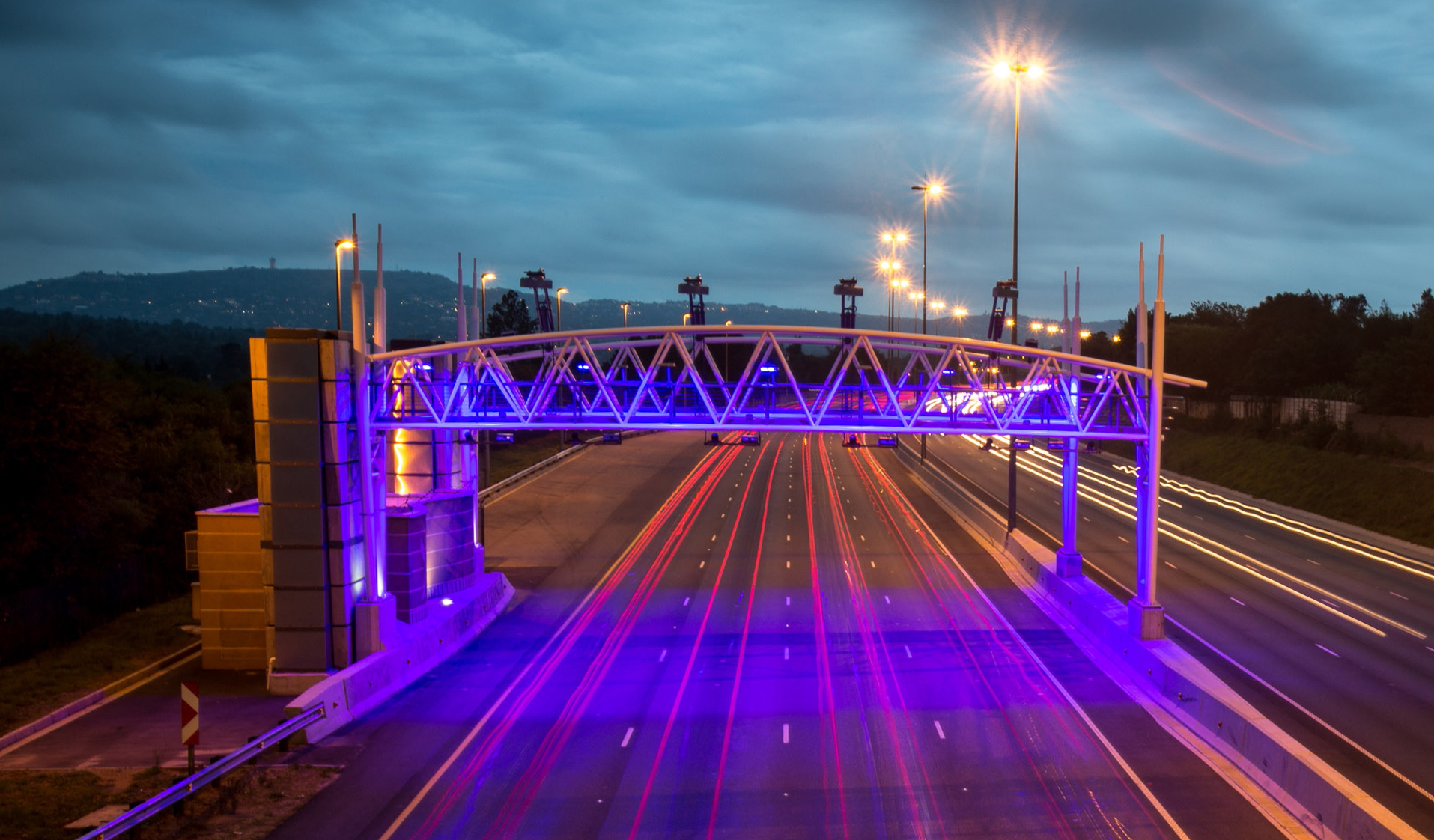The Gauteng government is hours away from switching off its unpopular electronic tolling system without having a firm or credible plan for how it will fund the expansion and maintenance of the province’s road infrastructure.
When the e-tolls system is permanently scrapped at midnight on Thursday, the Gauteng government will take over the maintenance and inspection of 201km of tolled freeways, bridges and slopes in the province — a role played by the SA National Roads Agency (Sanral) since December 2013.
This function costs at least R3-billion a year (including the recurring backlog of maintenance), which the provincial government will probably have to fund from its constrained budget.
At a media briefing on Wednesday, 10 April, Gauteng Premier Panyaza Lesufi was not forthcoming with details on how the province would come up with the money.
Lesufi would only say that negotiations for funding were under way. However, the implications remain unclear for Gauteng’s road users and ratepayers.
The practicality of scrapping Gauteng’s electronic tolling system also remains a mystery. Nobody seems to know whether motorists who complied with the system after its implementation in 2013 would be refunded (highly unlikely, with Lesufi arguing that they were beneficiaries of improved roads), or whether motorists who refused to comply with the system and racked up debt would be let off the hook.
Read more in Daily Maverick: Gauteng set to finally end e-tolls but overdue fees remain on the table
An answer to the latter question is important considering Sanral’s recent financial results show that compliance by motorists (barring minibus taxis and buses that were exempt) with the electronic tolling system reached only 17.65%.
This resulted in the system accumulating more than R9-billion in uncollectable debt from motorists who have refused to pay their toll fees since 2013.
This uncollectable debt, and money forked out by Sanral to maintain the tolling system, has to be paid by someone. And all indications are that the Gauteng government will have to cough up.
Sanral initially pumped R22.4-billion into building the e-tolls that formed part of the Gauteng Freeway Improvement Project (GFIP).
In July 2022, Sanral pumped a further R3.74-billion into the GFIP — money that was raided from government grants that were earmarked for funding untolled roads.
Only 7% of Sanral’s more than 20,000km road network is tolled.
Sanral’s untolled roads are funded through grants received from the national fiscus (or public finances) and money raised by the company in debt capital markets.
Over the years, Sanral borrowed money from the bond market to bankroll the GFIP, and in doing so, it asked lenders to buy its debt with a promise of repaying it at a later date (with interest).
Sanral’s debt associated with the GFIP is now estimated to have ballooned to R43-billion.
The plan to end e-tolls
To end e-tolls, Finance Minister Enoch Godongwana came to the rescue of Sanral and the Gauteng government by agreeing to a plan that will see the national government take over responsibility for 70% of Sanral’s debt tied to the electronic tolling system.
Godongwana has allocated an initial R23.7-billion taxpayer-funded bailout to pay Sanral’s debt and interest costs. The Gauteng government agreed to be responsible for the other 30% of Sanral’s debt, or R12.9-billion.
The provincial government has not yet come up with the money to pay its portion of Sanral’s debt.
Lesufi said his administration “has approached financial institutions” which could offer help. Discussions with lenders/funders are ongoing but remain “favourable”.
“The funders have to make representations. There is an appetite from financial institutions to settle the 30% [debt].”
The reality is that the Gauteng government cannot afford to independently foot the Sanral bill due to the province’s funding crisis.
Gauteng’s population swelled from 12.2 million in 2011 to just over 15 million in 2022, according to the latest Census, putting pressure on the province’s service delivery.
Mismanagement of taxpayers’ funds worsens the situation.
The province makes some of its money by charging people and companies a range of fees, spanning motor vehicle licences, gambling and liquor licences, fines or penalties, property rental fees and others.
These fees that the province charges (running into billions of rands – it’s expected to collect R8-billion this financial year) have been growing by less than 5% each year since 2020.
The province also receives funds and grants from the national government to cover service delivery initiatives. Much like the fees it charges people and companies in the province, money from the national government has also been constrained.
In announcing the end of e-tolls, Transport Minister Sindisiwe Chikunga offered an apology to the public for how the issue was mishandled. For instance, there were no proper consultation processes when the e-tolls were first introduced.
However, the damage (especially reputational) has arguably been done.
Since its launch in 1998, Sanral planned, financed, developed and maintained more than 20,000km of the national road network.
Now, the financial uncertainty caused by the e-toll saga could well affect SA’s drive to raise money for future infrastructure projects. DM





